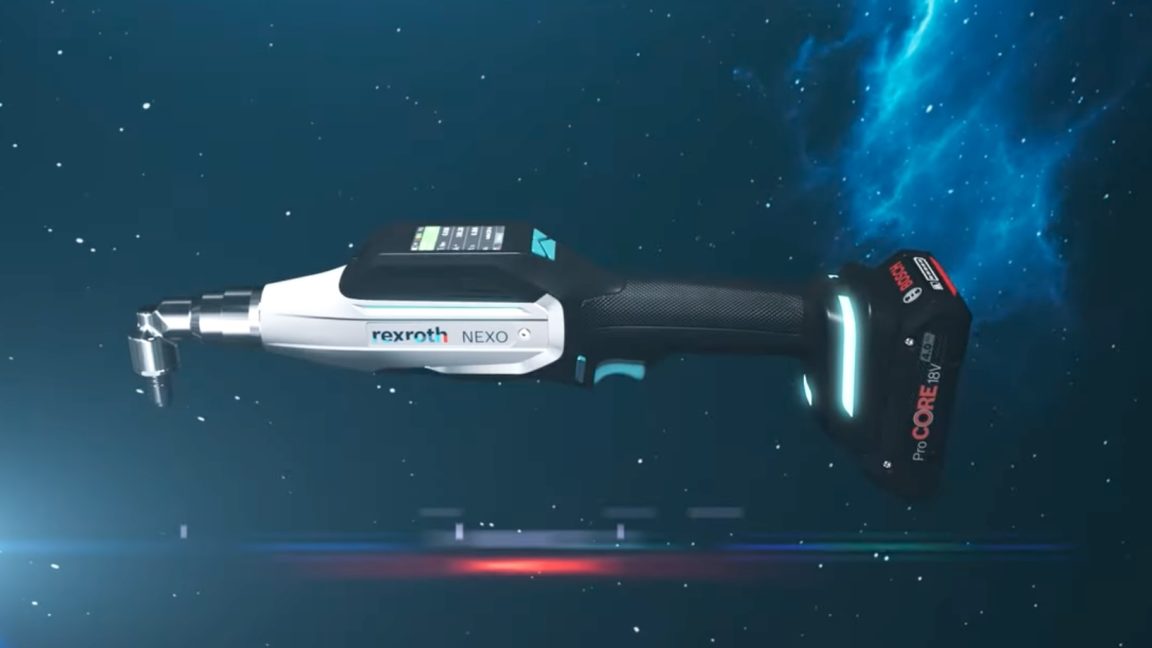Why? The? Fuck? Do? You? Need? To? Network? A? Fucking? Wrench?
In short, for process control.
Let’s take a look at automotive assembly plants (because that’s what I’m familiar with and where you are likely to find networked tools like this). Back in the day, torque tools on the assembly line we’re primarily air powered. Air tools are pretty great. They’re dependable and much faster than torquing fasteners by hand. They are even capable of offering limited torque control.
However, there are numerous drawbacks to using old school torque tools in an industrial setting. Under-torqued fasteners are hard to detect. You have to rely on the operator applying the appropriate number of “ugga duggas”. If an operator misses a fastener altogether, you have to hope someone downstream notices (good luck if that same operator installs a part that hides the missing fastener). Important fasteners require a second operation with a manual torque wrench to verify that the fastener is within spec, effectively doubling the labor cost for those fasteners. Plus, they are just noisy and compressed air is expensive and inefficient.
Enter electronic smart tools. These tools can be set to a specific torque window and can even detect crossed threads. Their biggest benefit is their ability to communicate with assembly line error proofing systems. These tools provide real time collection of torque data that can be transmitted wherever needed. They can be programmed to look for a preset number of good torque readings before sending a signal to the controller that allows a job to be released from the station. (The preset can be flexible to support production of different models on the same line)
For example, part of an operator’s job is to secure the front passenger seat of a car with 4 fasteners. If they fail to reach the correct torque on the first fastener, the tool will not run in forward until the fastener is backed and a retorqued to the required spec. If the operator fails to achieve 4 good torque readings before they reach the end of their work area, the assembly line will stop and an alarm will sound until the situation is corrected or error proofing is bypassed by an authorized individual.
The overwhelming majority of smart tools you will encounter on an automotive assembly line are all wired. They are mostly suspended from a rail system using retracting tool balancers. This system works fantastically most of the time, but sometimes the cable for the tool and the wire rope for the balancer make certain fasteners difficult to reach, or risk damaging paint or other sensitive surfaces. This is where Wi-Fi enabled smart tools come in.
Thanks for reading!
Amazing explanation, thank you!
Thank you! This was a brilliant read.
The cordless device, which wirelessly connects to the local network of organizations that use it, allows engineers to tighten bolts and other mechanical fastenings to precise torque levels that are critical for safety and reliability. When fastenings are too loose, they risk causing the device to overheat and start fires. When too tight, threads can fail and result in torques that are too loose. The Nutrunner provides a torque-level indicator display that’s backed by a certification from the Association of German Engineers and adopted by the automotive industry in 1999. The NEXO-OS, the firmware running on devices, can be controlled using a browser-based management interface.
Basically to manage and provide a uniform performance. Still weird. If that thing’s so important, letting it sit like that open to reconfiguration over the air doesn’t sound that clever. I assume engineers do the same couple of nuts so configuring a program over a wire could be just as good.
Sounds like what boeing used to tighten the bolts on those doors.
This is some British sci-fi/comedy shit.

We’ve had a screwdriver, a cane, specs, and a TV remote. So why not a wrench.
I’d guess to make certain activities auditable as a means to protect the company and workers from accusations of improperly torquing important fasteners.
That could be achieved with simple data logging to an SD card.
How else would you logon to and interact with your followers on NutNetwork, the social platform where tool enthusiasts come together to discuss, connect, and tighten their relationships in the world of nuts and bolts?
This is heart-wrenching to read.
Agreed. Any internet-connected device interacting with my nuts and related hardware had better be designed with security in mind.
I see what you did there.
Relevant Asimov short story.
Don’t wanna be your malware wrench…










